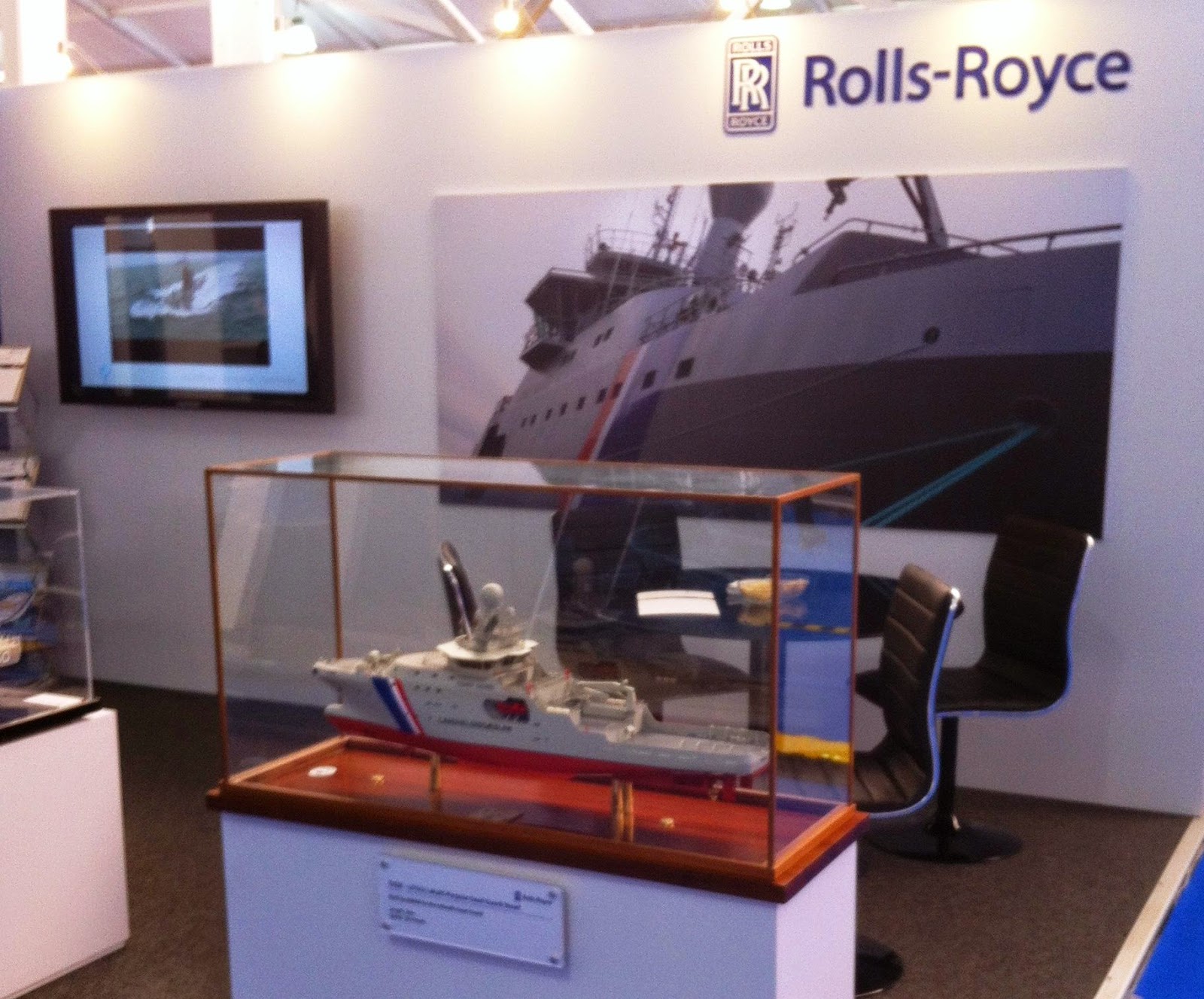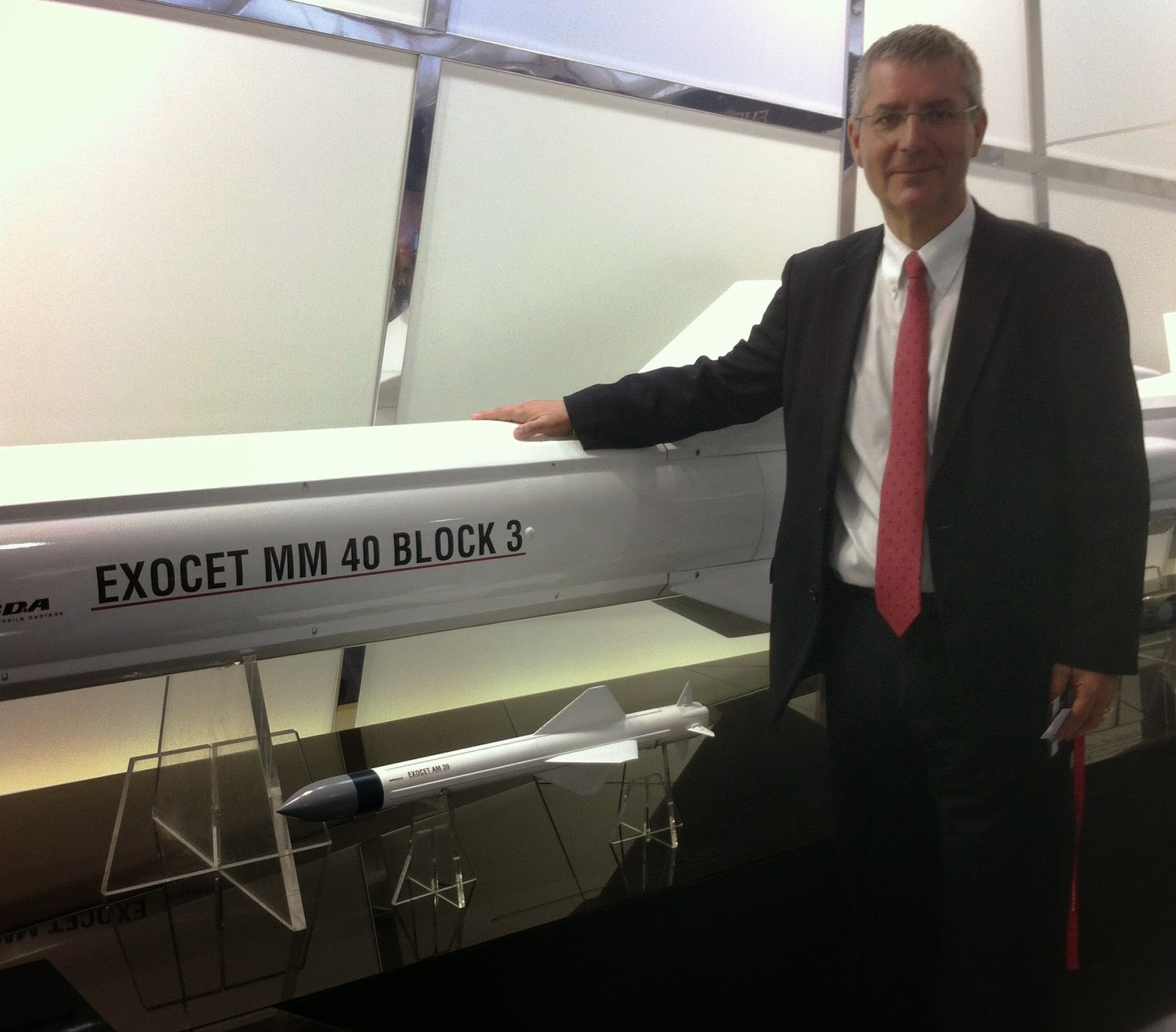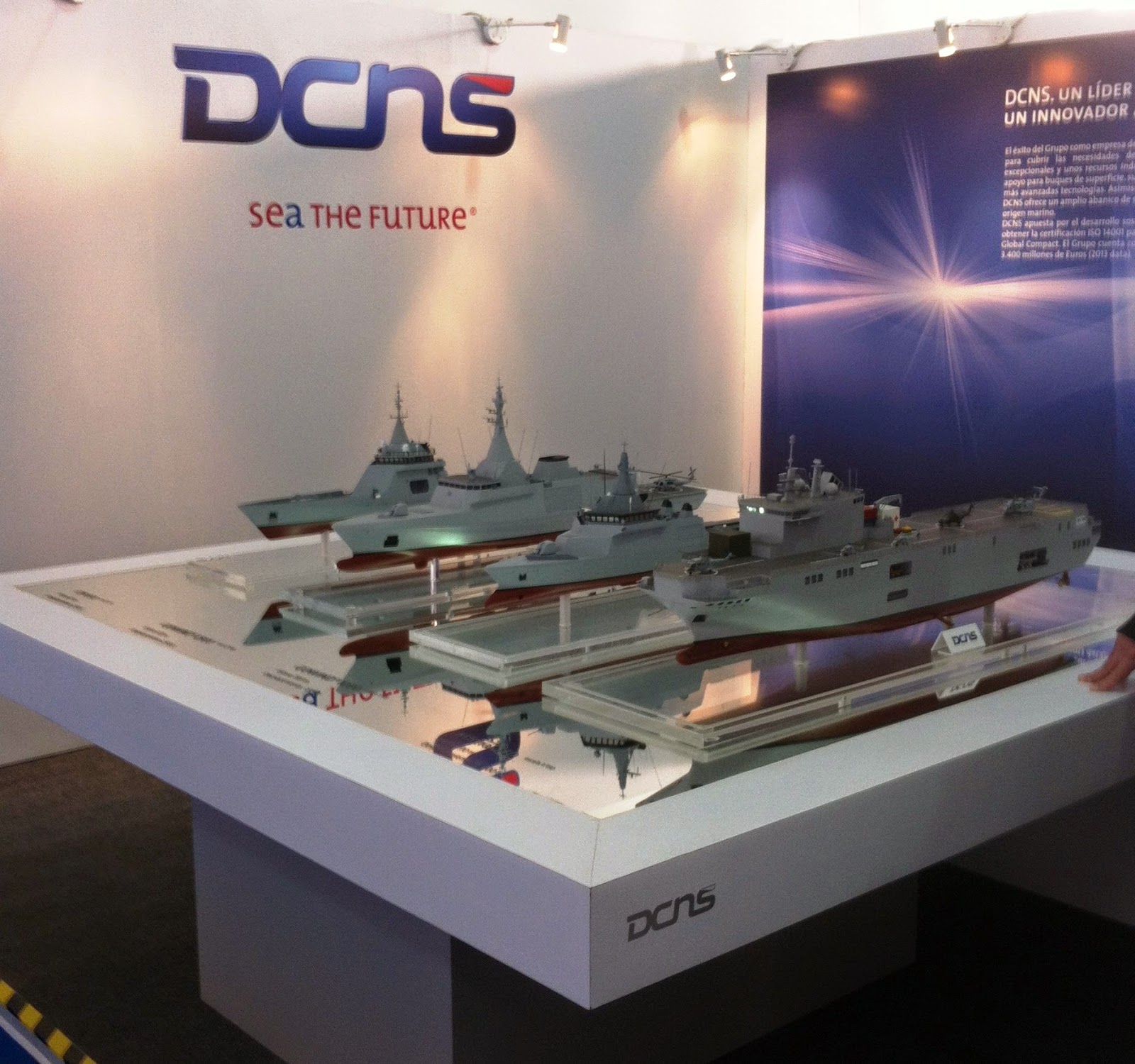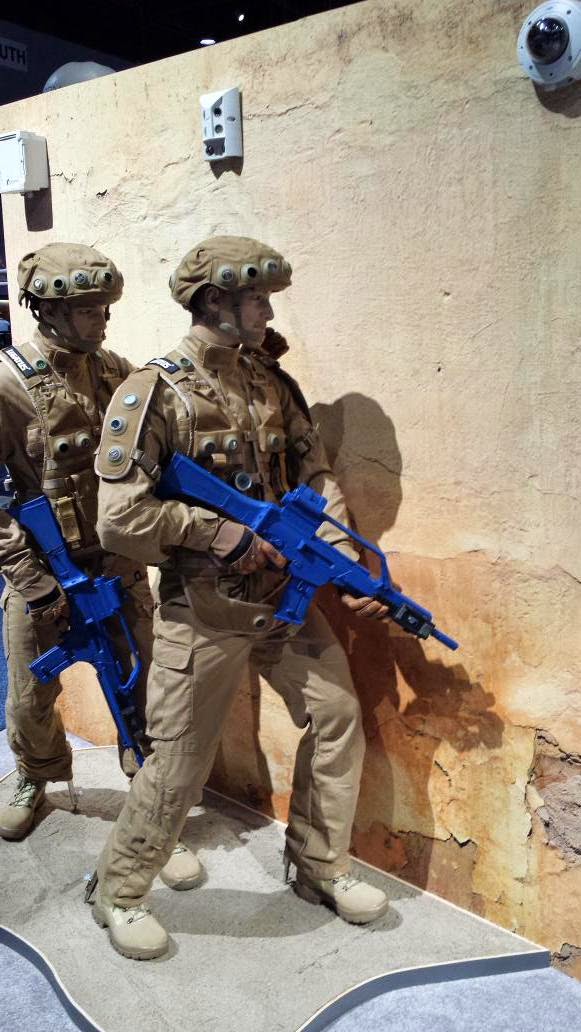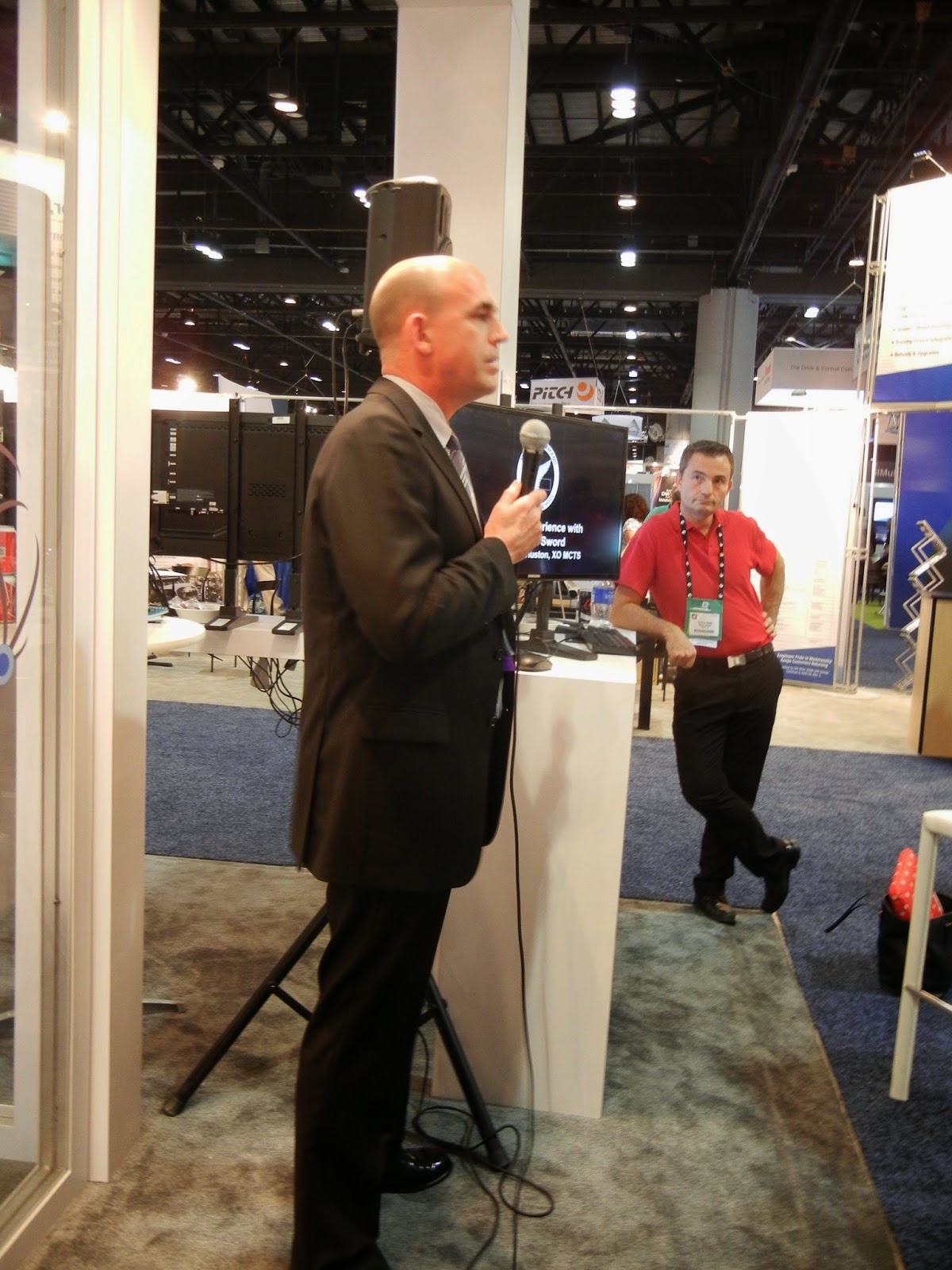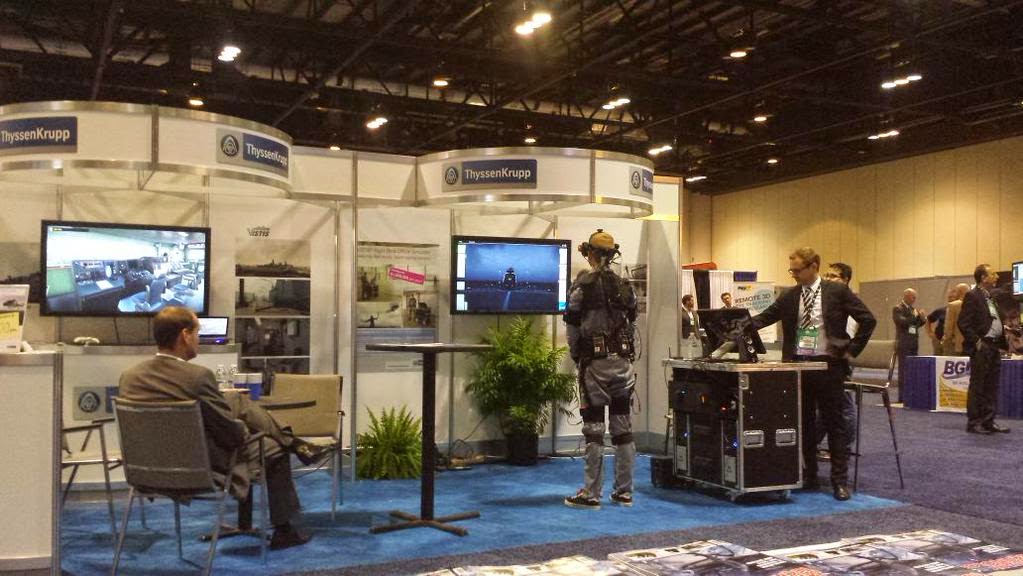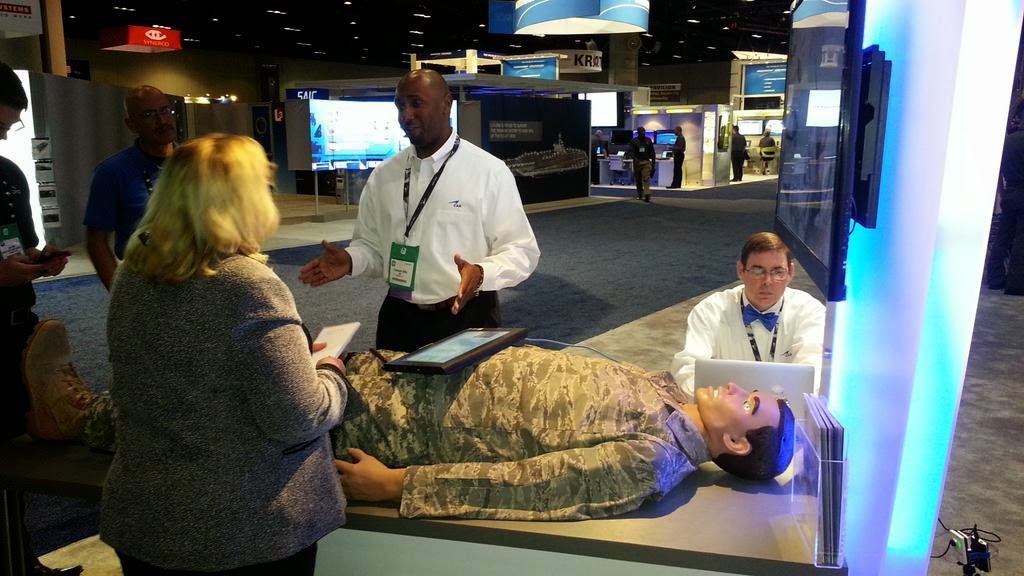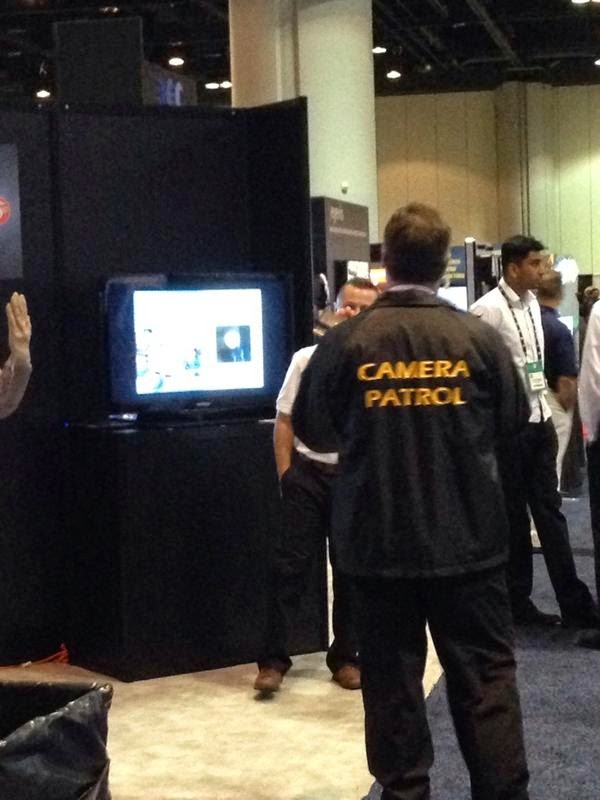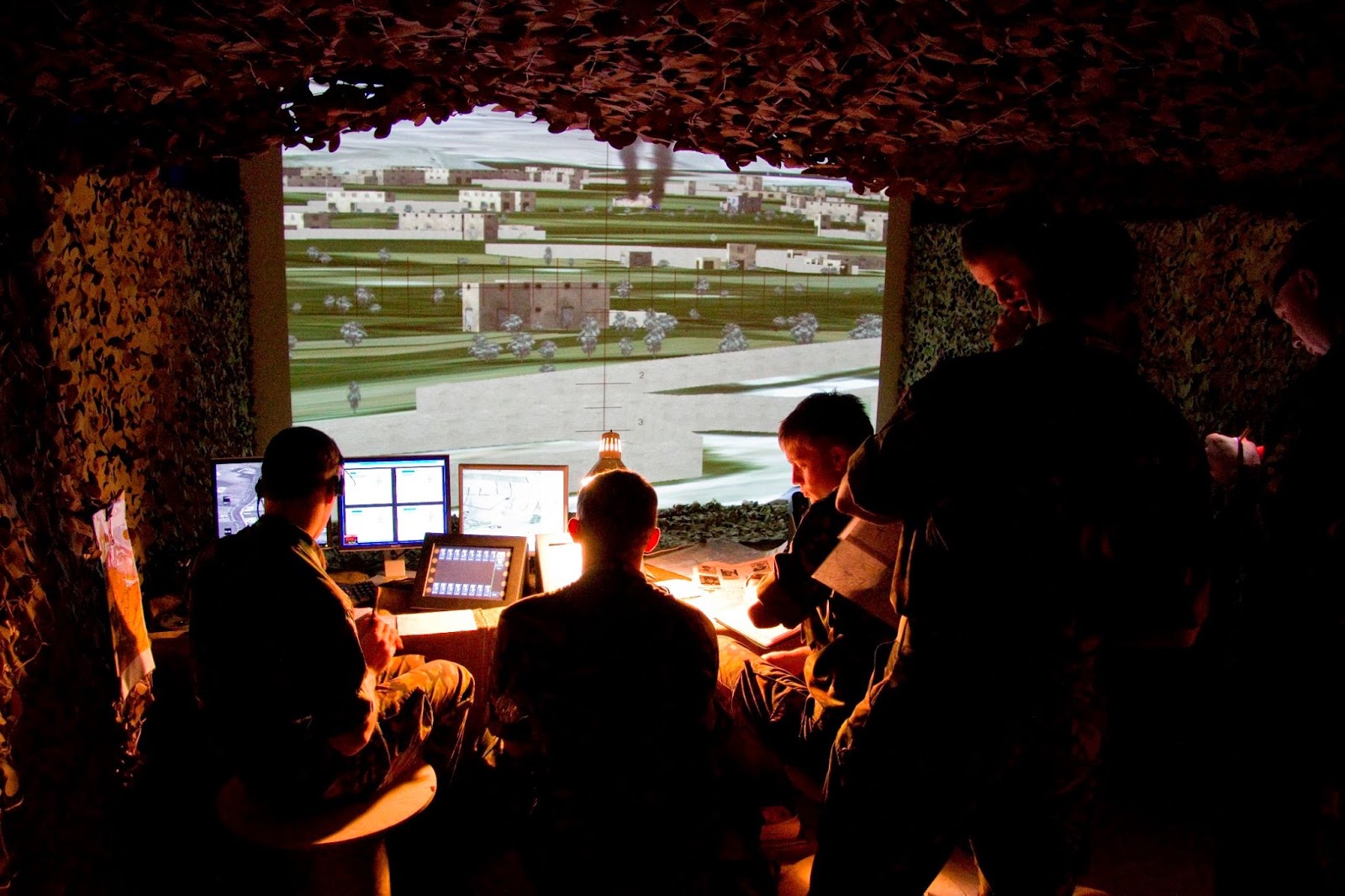Not, in this case, a replacement for a mere, a wahaika, a kotiate, a taiaha or a toki pou tangata, (all of which, are, in fact, Maori weapons) but a constructive simulation from Paris-based MASA Group.
The story starts at I/ITSEC 2013 – just one year ago – when Major Michael Chivers from the Mission Command Training School (MCTS) in Linton, New Zealand, had a first hand demonstration of MASA’s SWORD command post training simulation system. In very short order, the New Zealand Army obtained a trial set of SWORD for the school and progressed with it so rapidly they had the confidence to use it to stimulate the existing command and control system in a multinational exerice held in New Zealand last September.
Colin Huston, Executive Officer of MCTS (which is itself fairly new, having been created in October 2012 from the New Zealand Army Simulation Centre, itself established in 2001), gave an audience on the MASA Stand at I/ITSEC 2014 on 3 December a flavour of how quickly and how effectively SWORD was integrated into MCTS activities.
The speed of acquisition in this case is pretty typical of MCTS’ freedom of action, according to Huston, since the School has its own budget and the authority to spend freely up to certain thresholds. This was helped by the fact that the procurement was fairly small – just 12 licenses – and was initially operated on a lease model as the school evaluated the potential utility of SWORD, though Huston confirmed that a more permanent arrangement is now being negotiated.
In September this year, SWORD was deployed by MCTS in support of Exercise SUMAN WARRIOR, an annual land-based tactical level command post exercise held under the auspices of the Five Powerv Defence Arrangements, comprising the nations of Singapore, United Kingdom, Malaysia, Australia and New Zealand. Some 180 military personnel participated in the exercise, hosted by New Zealand at the Linton military base at Palmerston North on North Island.
The SWORD simulation was used at brigade headquarters in combination with Systematic’s SitaWare command and control software, with local firm Eagle Technology providing the middleware to facilitate connectivity and interoperability.
In effect, SWORD was used to stimulate SitaWare and the exercise participants worked off the New Zealand Army’s own command and control system. In fact, the participants found the system so intuitive and immersive that they almost forgot there was a simulation running, according to Huston, focusing on action rather than means. Which is a pretty powerful definition for immersive training, when you come to think about it.
New Zealand uses NATO doctrine, which meat the SWORD needed practically no modification in order to provide immediate and tangible benefits to SUMAN Warrior. Perhaps the proof of the pudding is that in the post exercise report, rather than pages of critiqwue and evaluation of the contribution SWORD made to the event, brigade headquarters limited itself to the apparently laconic but definitely sincere comment “It worked really well.” Four words that speak volumes.
The story starts at I/ITSEC 2013 – just one year ago – when Major Michael Chivers from the Mission Command Training School (MCTS) in Linton, New Zealand, had a first hand demonstration of MASA’s SWORD command post training simulation system. In very short order, the New Zealand Army obtained a trial set of SWORD for the school and progressed with it so rapidly they had the confidence to use it to stimulate the existing command and control system in a multinational exerice held in New Zealand last September.
Colin Huston, Executive Officer of MCTS (which is itself fairly new, having been created in October 2012 from the New Zealand Army Simulation Centre, itself established in 2001), gave an audience on the MASA Stand at I/ITSEC 2014 on 3 December a flavour of how quickly and how effectively SWORD was integrated into MCTS activities.
The speed of acquisition in this case is pretty typical of MCTS’ freedom of action, according to Huston, since the School has its own budget and the authority to spend freely up to certain thresholds. This was helped by the fact that the procurement was fairly small – just 12 licenses – and was initially operated on a lease model as the school evaluated the potential utility of SWORD, though Huston confirmed that a more permanent arrangement is now being negotiated.
In September this year, SWORD was deployed by MCTS in support of Exercise SUMAN WARRIOR, an annual land-based tactical level command post exercise held under the auspices of the Five Powerv Defence Arrangements, comprising the nations of Singapore, United Kingdom, Malaysia, Australia and New Zealand. Some 180 military personnel participated in the exercise, hosted by New Zealand at the Linton military base at Palmerston North on North Island.
The SWORD simulation was used at brigade headquarters in combination with Systematic’s SitaWare command and control software, with local firm Eagle Technology providing the middleware to facilitate connectivity and interoperability.
In effect, SWORD was used to stimulate SitaWare and the exercise participants worked off the New Zealand Army’s own command and control system. In fact, the participants found the system so intuitive and immersive that they almost forgot there was a simulation running, according to Huston, focusing on action rather than means. Which is a pretty powerful definition for immersive training, when you come to think about it.
New Zealand uses NATO doctrine, which meat the SWORD needed practically no modification in order to provide immediate and tangible benefits to SUMAN Warrior. Perhaps the proof of the pudding is that in the post exercise report, rather than pages of critiqwue and evaluation of the contribution SWORD made to the event, brigade headquarters limited itself to the apparently laconic but definitely sincere comment “It worked really well.” Four words that speak volumes.
Tim Mahon

